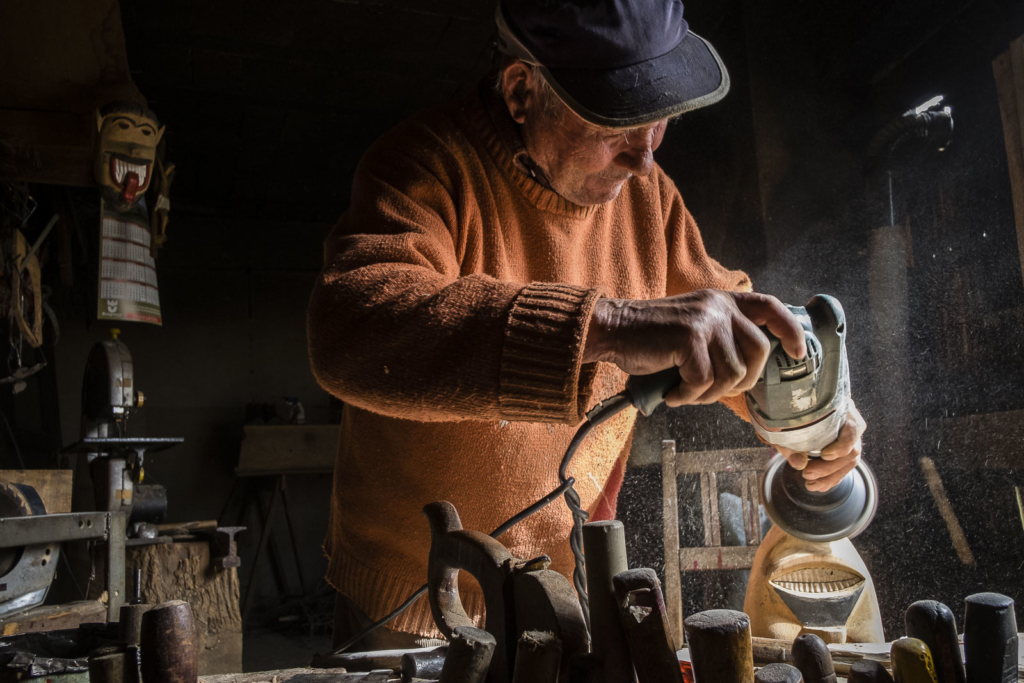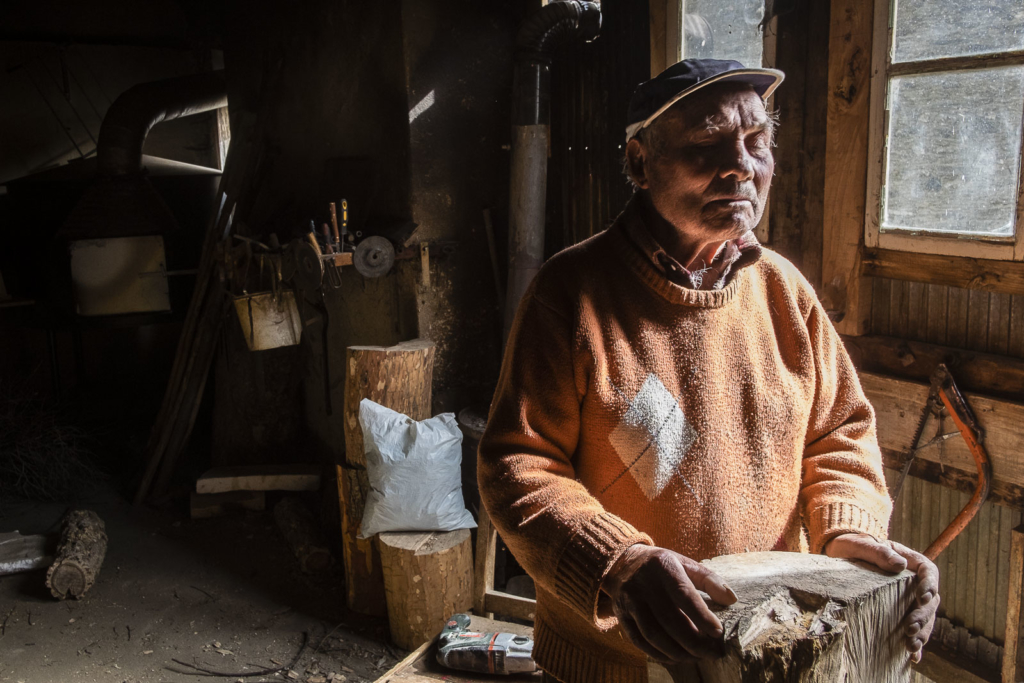At Grijó de Parada, a village in the Bragança district, in the north of Portugal, people usually make masks out of tin. But mister António Pássaro makes his out of wood. “These are not for the ‘caretos’, these are for decoration.”, he says.


Pássaro (which in Portuguese means bird), or “passarinho” (little bird), as his wife Zélia calls him because “he was the youngest of his flock”, is over eighty years old. He still works as a carpenter and woodcarver, having learnt from his father, and he still has some of the tools he inherited, like an old huge saw that he makes a point of showing. Today he carves masks from ideas he gets out of books on mask traditions from Portugal and Spain.



With a warm and sincere smile as is the custom of the people in the Trás-os-Montes region of Portugal, he opens the door of his small workshop and invites us in. For him, a piece of wood has no secrets. We are greeted in his workshop by several, some big, others small, that he has transformed in saints, animals, and other shapes. As he works on a mask of a king, I enjoy each dusty corner, filled with tools and unfinished works, thinking about the stories that each one has to tell.







Almost two years later I go back to Trás-os-Montes to photograph the winter solstice traditions, with other photographers from Portugal and Spain. As I say goodbye to one of the Spanish photographers, I catch a glimpse of a wooden mask of a horned demon in the trunk of his car. “It’s from Pássaro! I bought it the other day in Grijó! He doesn’t stop, he’s full of orders!”.
I am happy that in spite of his advanced age, mister Pássaro is still making the masks he loves so much, and that there are still people who like them so much.



